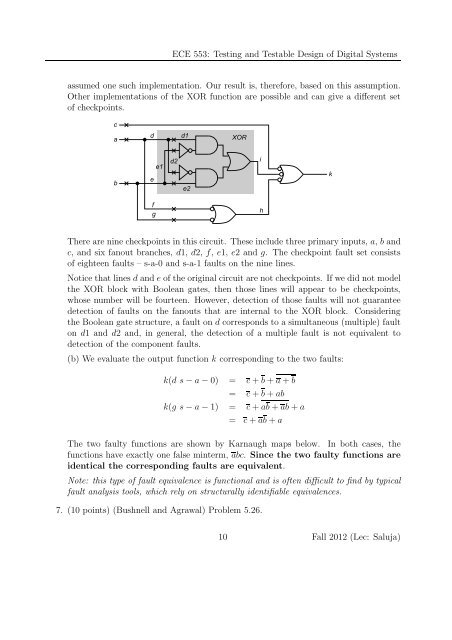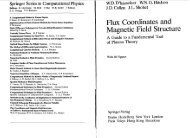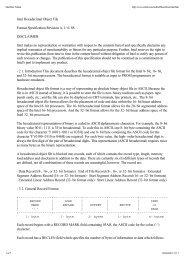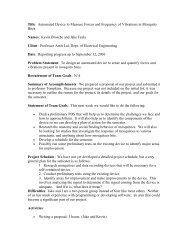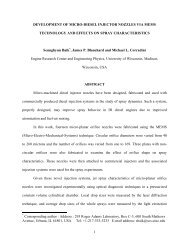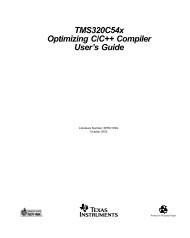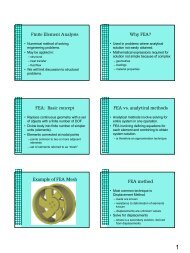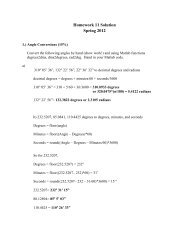Homework set 2 solution(pdf file) - University of Wisconsin-Madison
Homework set 2 solution(pdf file) - University of Wisconsin-Madison
Homework set 2 solution(pdf file) - University of Wisconsin-Madison
You also want an ePaper? Increase the reach of your titles
YUMPU automatically turns print PDFs into web optimized ePapers that Google loves.
ECE 553: Testing and Testable Design <strong>of</strong> Digital Systems<br />
assumed one such implementation. Our result is, therefore, based on this assumption.<br />
Other implementations <strong>of</strong> the XOR function are possible and can give a different <strong>set</strong><br />
<strong>of</strong> checkpoints.<br />
c<br />
a<br />
b<br />
d<br />
e<br />
f<br />
g<br />
e1<br />
d2<br />
d1<br />
e2<br />
XOR<br />
There are nine checkpoints in this circuit. These include three primary inputs, a, b and<br />
c, and six fanout branches, d1, d2, f, e1, e2 and g. The checkpoint fault <strong>set</strong> consists<br />
<strong>of</strong> eighteen faults – s-a-0 and s-a-1 faults on the nine lines.<br />
Notice that lines d and e <strong>of</strong> the original circuit are not checkpoints. If we did not model<br />
the XOR block with Boolean gates, then those lines will appear to be checkpoints,<br />
whose number will be fourteen. However, detection <strong>of</strong> those faults will not guarantee<br />
detection <strong>of</strong> faults on the fanouts that are internal to the XOR block. Considering<br />
the Boolean gate structure, a fault on d corresponds to a simultaneous (multiple) fault<br />
on d1 and d2 and, in general, the detection <strong>of</strong> a multiple fault is not equivalent to<br />
detection <strong>of</strong> the component faults.<br />
(b) We evaluate the output function k corresponding to the two faults:<br />
k(d s−a−0) = c+b+a+b<br />
i<br />
h<br />
= c+b+ab<br />
k(g s−a−1) = c+ab+ab+a<br />
= c+ab+a<br />
The two faulty functions are shown by Karnaugh maps below. In both cases, the<br />
functions have exactly one false minterm, abc. Since the two faulty functions are<br />
identical the corresponding faults are equivalent.<br />
Note: this type <strong>of</strong> fault equivalence is functional and is <strong>of</strong>ten difficult to find by typical<br />
fault analysis tools, which rely on structurally identifiable equivalences.<br />
7. (10 points) (Bushnell and Agrawal) Problem 5.26.<br />
10 Fall 2012 (Lec: Saluja)<br />
k


